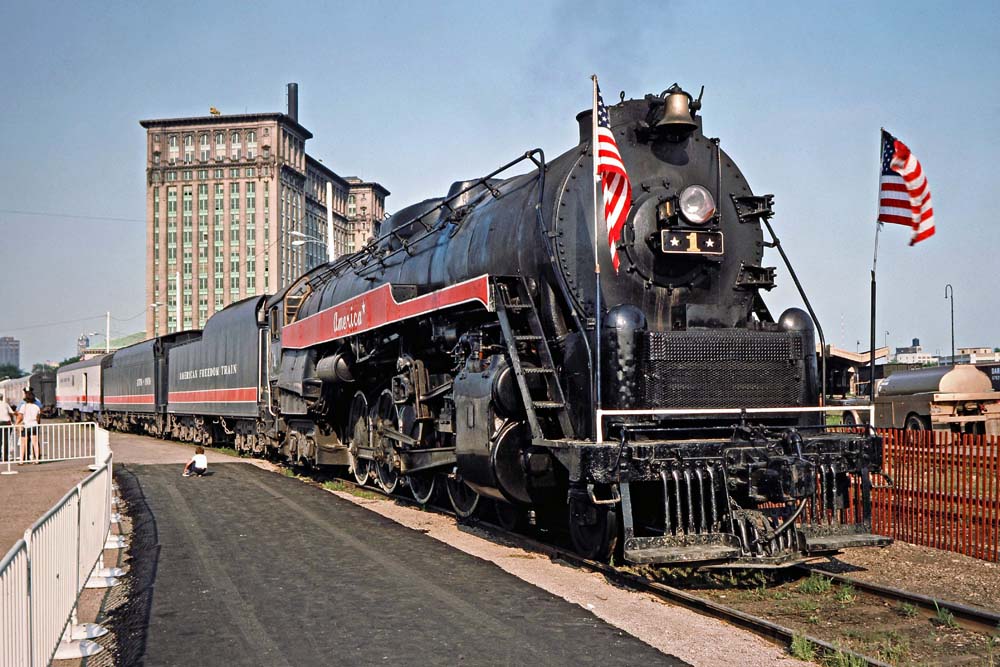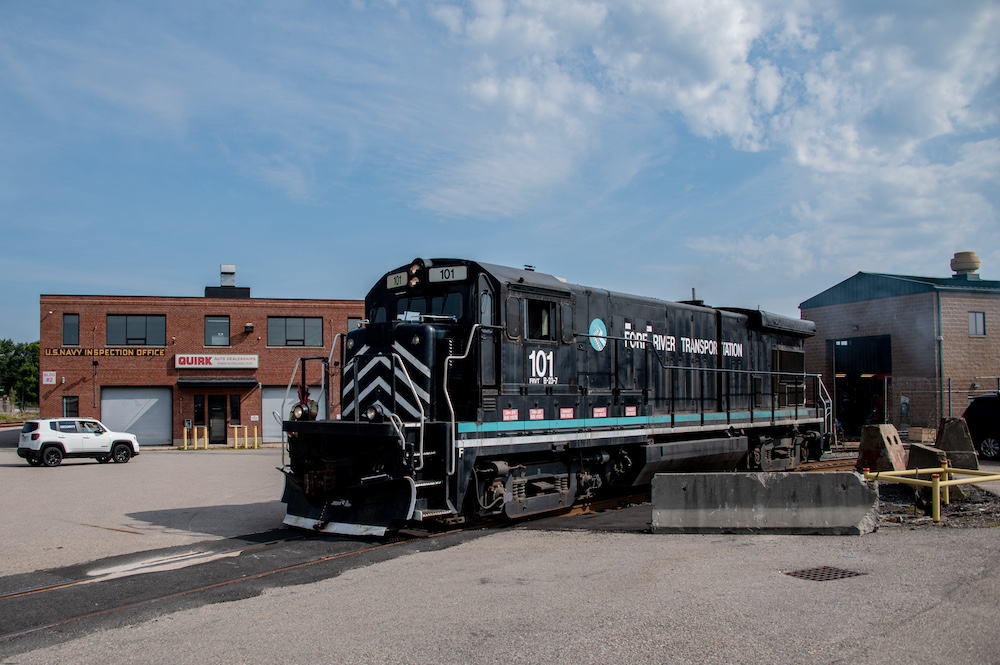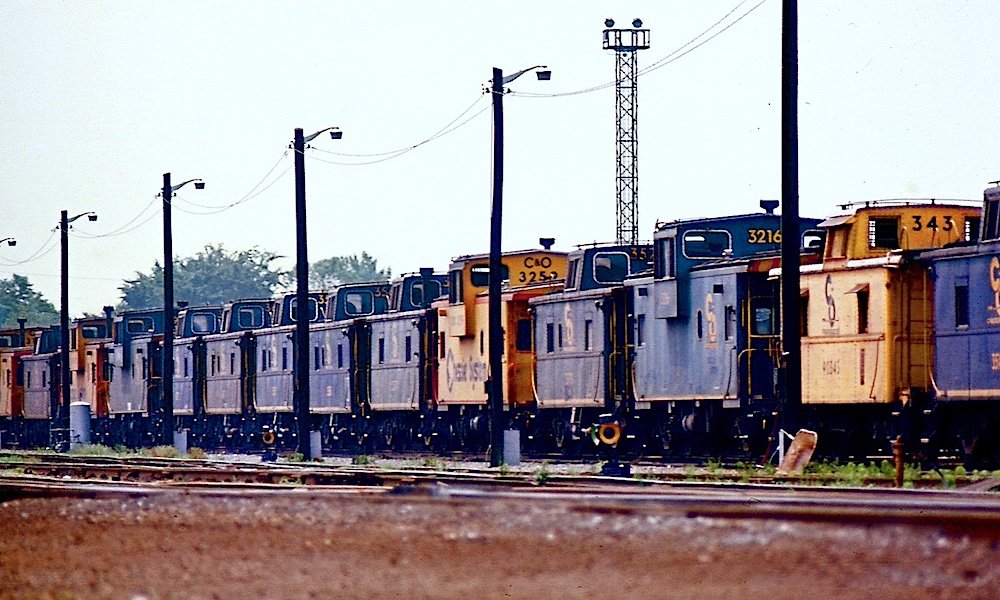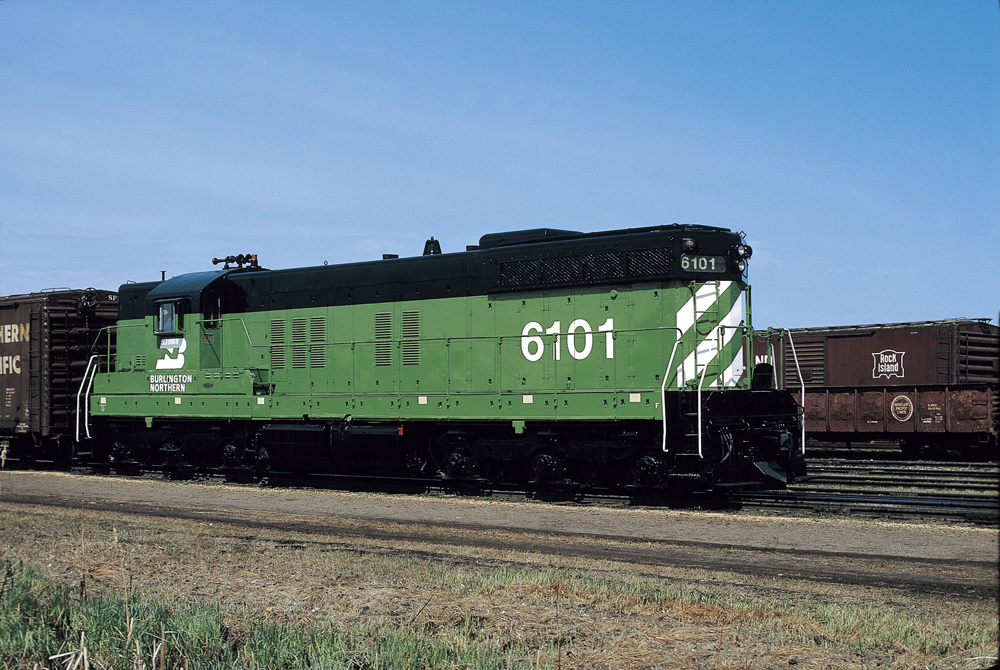A This started in the early 1960s when autoracks first came into use. Flatcars, with TTX reporting marks, were pulled from the Trailer Train pool, but the racks were purchased by the railroads that hauled autos, and thus still carry the railroads’ logos. In addition, many railroads (Southern Pacific, Canadian Pacific, Santa Fe, Norfolk Southern, and others) have had fleets of their own flatcars in such service, which have the railroad’s reporting marks on the car as well as a logo on the rack. Nowadays, TTX Co. (the new name of Trailer Train in 1991) owns many flatcar/rack combinations as well. – Jeff Wilson
A Dining cars were often the heaviest cars on a passenger train, rivaled in the early 1900s only by heavyweight Pullman sleeping cars. Car weight varied with length and design, but a typical heavyweight dining car of the steam era weighed about 170,000 pounds (85 tons), compared with about 120,000 pounds (60 tons) for a coach. Even with the coming of lightweight car construction beginning in the ’30s, the heavy kitchen equipment meant diners were still heavy cars, often weighing 140,000 to 160,000 pounds, or 10 to 20 tons heavier than other lightweight cars. – Jeff Wilson
A By the late 1800s, railroads were using at least 68 different time standards, making it difficult for agents to issue tickets for connecting trains. Towns and cities followed their own time standards, which could vary from one side of town to another (or among railroads in a single town). Great Britain had established Greenwich Mean Time in 1848, but the United States did not follow.
It took the nation’s railroads to get time under control. The American Railroad Association announced that U.S. railroads would adopt four time zones (Eastern, Central, Mountain, and Pacific) and a new standard time as of Sunday, Nov. 18, 1883. Most local, state, and federal offices shortly followed suit, although it was another 35 years before Congress officially sanctioned standard time. Even today, the U.S. Department of Transportation regulates time zones – in early 2006, it authorized eight western Indiana counties to switch from Eastern to Central Time, but denied the change to a dozen other counties that had requested the switch. – Carl Swanson, Senior Editor, MODEL RAILROADER magazine
A The Wimble smoke duct was developed to keep smoke from the stack away from the engine cab in tunnels, of which there were many on the “Rat Hole Division,” Southern’s line south from Cincinnati through the mountains (officially operated as subsidiary Cincinnati, New Orleans & Texas Pacific). If the smoke was diverted through the duct and back along the top of the engine, it supposedly was less likely to swirl into the cab. Such devices were unusual but not unique to Southern; Canadian Pacific also used smoke ducts in its mountain territory.
Smoke deflectors – large pieces of sheet metal on either side of the smokebox, as on Union Pacific excursion 4-8-4 No. 844 – were intended to create air currents that would lift smoke up and away from the cab. Since deflectors were designed to lift smoke upward, they would not be of help in tunnels. – Robert McGonigal, Editor, CLASSIC TRAINS magazine
A Steam-locomotive driving wheels are “quartered” to make sure the locomotive can’t stop in a position where neither of its pistons can get it started again. The cylinders exhaust alternately, and because of the quartering of crankpins on opposite sides, as the right-side piston completes half of its back stroke (crankpin at bottom center), the left-side piston is in position to start its forward stroke (crankpin at back center). – Andy Sperandeo, Executive Editor, MODEL RAILROADER magazine
A When completed in 1929, Great Northern’s new Cascade Tunnel (which replaced an earlier, shorter Cascade Tunnel) was indeed the longest in the Western Hemisphere, at 7.8 miles. Built by GN to ease operations on its transcontinental route, Cascade still sees many daily trains of GN successor BNSF Railway, plus Amtrak’s Empire Builder. It is no longer the record-holder, though, having lost that distinction to Canadian Pacific’s 9.1-mile-long Mount MacDonald Tunnel, which opened in 1988 on CP’s new Rogers Pass line in British Columbia. Although these are the longest tunnels in the Western Hemisphere, they rank far down on the list of the world’s longest tunnels, with Mount MacDonald at No. 20 and Cascade at No. 32. Moreover, many new, longer tunnels are under construction, the longest for the moment being Japan’s 33.4-mile Sei-Kan tunnel. – Jeff Wilson













